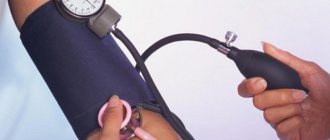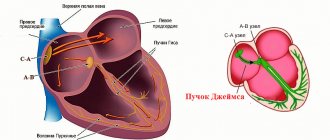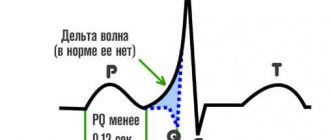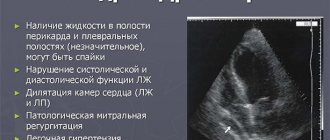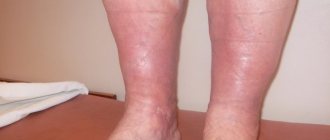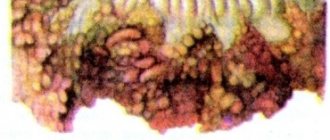Etiology
The main cause of HVS is a violation of the autonomic regulation of the functioning of the respiratory system, which is caused by various factors and conditions:
- psychogenic factors - neurosis-like conditions, neurasthenic disorders, hysterical attacks, phobias, severe stress, anxiety disorders, depression, hysterical neurosis;
- organic damage to the nervous system - arachnoiditis, meningitis, encephalitis, neoplasms and traumatic lesions of the central nervous system, acute cerebrovascular accident;
- congenital anomalies;
- fever of various origins;
- infectious-toxic shock;
- pregnancy;
- neuroinfections;
- chronic somatic pathologies - diabetes mellitus, rheumatoid arthritis, hypertension, heart and respiratory system diseases;
- taking certain medications;
- severe intoxication with various pesticides, medications, gases, alcohol;
- metabolic disorders;
- intense physical activity for an untrained person.
The causes of the syndrome listed above weaken the body, which becomes even more susceptible to the disease. Triggering factors for the development of pathology: stress, fear, shock, panic, hysteria. In children, hyperventilation is caused by a weak heart or birth trauma. As a result of a strong psycho-emotional shock, they experience a feeling of lack of air: inhalation seems to block the larynx area and does not pass further. Children's fear and panic only worsen the attack.
About secondary hypertension
It should be said that arterial hypertension syndrome may not necessarily be primary. Only when the patient has been thoroughly examined and doctors have not found any reason for the development of this syndrome, a diagnosis of “essential arterial hypertension” or “hypertension” is made.
If the cause of the high blood pressure is found and can be treated, then hypertension is considered syndromic and does not dominate the diagnosis. For example, with renal artery stenosis, the pressure in the closed circulatory system will increase. After the operation, the pressure will return to normal. This is where renal arterial hypertension occurs.
With a hormonally active tumor of the adrenal cortex, pheochromocytoma, a lot of adrenaline enters the blood, since it produces it. As a result, blood pressure rises to significant levels, and with bilateral damage to the adrenal glands, the course of hypertension acquires a malignant, crisis character. In this case, there is also a case of symptomatic hypertension.
Since hypertension never develops instantly (it is preceded by a long period of hidden changes), you need to carefully monitor your health, avoid gaining excess weight, maintain physical activity, eat right, give up bad habits and regularly monitor your blood pressure.
Pathogenesis
The relationship between the respiratory system and the psycho-emotional state is easily explained by the ability of people to regulate the depth of inhalation and exhalation, to hold or intensify their breathing.
Pathogenetic links of the syndrome:
- stress,
- hyperexcitability of the respiratory center,
- muscle spasm,
- violation of the alternation of inhalation and exhalation,
- respiratory "arrhythmia"
- feeling of lack of air,
- deep panic
- pulmonary hyperventilation,
- hypocapnia,
- alkalosis,
- changes in the activity of enzymes and vitamins,
- mineral imbalance,
- metabolic disorder,
- cell death.
Compensatory protective mechanisms in the lungs are activated - the bronchi and blood vessels spasm, blood pressure decreases, and the synthesis of cholesterol in the liver accelerates, which thickens cell membranes. These processes reduce the removal of carbon dioxide from the body. Provided there is a high degree of compensation for pathological changes in organs, a sick person may clinically appear practically healthy for some time. But gradually spasms of the bronchi and blood vessels lead to oxygen deficiency in the brain tissue, myocardium, and kidneys. Hypoxia manifests itself as loss of consciousness and ends in the death of brain tissue.
When hyperventilation occurs in the patient’s body, two phenomena occur simultaneously - hypoxia and hypocapnia. Insufficient oxygen supply to the brain tissue and low levels of carbon dioxide in the blood cause the clinical manifestations of the disease and disrupt the functioning of internal organs and systems. Patients experience impaired consciousness, vegetative, sensory and algic disorders. Increased anxiety supports hyperventilation. This creates a vicious circle that the body is unable to break on its own, even after the influence of the causative factor has ceased.
What is “hyperventilation syndrome”?
The term was coined back in the 19th century to refer to disorders in the respiratory system caused by a person’s psycho-emotional state, during which the normal inhalation-exhalation rhythm was disrupted and there was a feeling of lack of oxygen for full breathing. “Hyperventilation” means excessive ventilation in the respiratory organs, exceeding the norm of oxygen and carbon dioxide intake, which occurs due to improper behavior of a person when breathing.
Hyperventilation syndrome is accompanied by symptoms of different origins, indicating simultaneous pathology in several parts of the body, but no pathological changes are observed. In medicine, hyperventilation is considered a clear manifestation of vegetative-vascular dystonia, which, in fact, is not a disease, but only a symptom of disorders in the autonomic nervous system.
As a result of a temporary malfunction in the functioning of the central nervous system, changes occur in the breathing process - ventilation of the lungs increases due to a person’s attempt to take more frequent and deeper breaths, which leads to certain disturbances in the body. Dissatisfaction with inhalation leads a person into a state of panic, irritation, and fear for his life. This causes discomfort, both physical and psychological, and requires specific therapy.
Women are more susceptible to the diagnosis of “hyperventilation syndrome” due to their impressionability and emotional instability, inability to cope with a stressful situation. But hyperventilation syndrome is diagnosed in people of all ages, from children to elderly patients.
The unfavorable psychological situation in modern society contributes to an increase in the number of patients visiting the clinic with symptoms that can be classified as hyperventilation syndrome.
Symptoms
A feature of persistent hyperventilation syndrome is its crisis course, characterized by the sudden appearance of clinical signs, their certain duration and rapid disappearance. Attacks of the disease are repeated at certain intervals.
During an attack, patients complain of causeless anxiety and restlessness, shortness of breath, and suffocation. They greedily open their mouths and frantically swallow air. Patients are unable to take a deep breath; a “lump” in their throat prevents them. Breathing becomes frequent and arrhythmic. Gradually the fear intensifies and panic arises. Patients feel as if they are dying. This is facilitated by vegetative manifestations - chest pain, tachycardia, hypertension. DHW is always accompanied by signs of asthenia in the body, loss of performance, subfebrile or febrile temperature.
The symptoms of HVS are diverse and polymorphic. The syndrome is characterized by a typical triad of clinical signs: increased breathing, paresthesia and tetany. The clinical picture of HVS consists of manifestations that are divided into the following groups: autonomic, psychoneurological, motor, pain.
- Respiratory disorders are manifested by a feeling of lack of air, a dry cough with attacks of suffocation; ineffective inhalation - the inability to take a deep breath. The breathing of patients becomes heavier and more frequent compared to healthy people. Accessory muscles take part in the act of breathing. Attacks of HVS resemble those of bronchial asthma. In this case, there are no asthmatic auscultatory signs. Impaired breathing is accompanied by frequent sighs, coughing, yawning, and sniffling. These actions are repeated systematically and without reason. Such processes change the normal gas composition of the blood and disrupt the pH.
- Cardiac disorders with HVS are manifested by stabbing and pressing pain in the heart; feeling of heartbeat; pressure surges; tachycardia; migraine; dizziness; unsteadiness of gait; tinnitus; acrocyanosis; hyperhidrosis; extrasystoles. These symptoms are caused by changes in the functional state of the myocardium.
- Disorders of the gastrointestinal tract are manifested by increased peristalsis, diarrhea, less often constipation, belching of air, dry mouth, difficulty swallowing, flatulence, vomiting, nagging pain in the epigastrium.
- Changes in consciousness - fainting, “floaters” and “veils” before the eyes, blurred vision, derealization, impaired self-perception.
- Motor disorders are disorders of involuntary motor acts. They are caused by pathological changes in the muscular or nervous systems and are manifested by an increase in neuromuscular tension, the appearance of tremors in the arms and legs, internal tremors, and convulsions.
- Pain and sensitivity disturbances - paresthesia, numbness of the face and hands, a feeling of “crawling goosebumps” on the skin, painful sensations behind the sternum and in the epigastric region, headache, myalgia, arthralgia, exacerbation of tactile sensations.
- Mental disorders - anxiety, fear, insomnia, rapid mood swings, restlessness, sadness and melancholy, hyperemotionality. Patients experience constant nervous tension and cannot completely relax.
Causes of breathing problems
The causes of hyperventilation syndrome are varied, but in most cases it is psychological stress that leads to spasms in the central nervous or autonomic region. The control of the respiratory function is disrupted in the system, which is perceived by a person as a lack of oxygen at a certain moment and the fear of complete cessation of breathing.
The main reasons for the formation of hyperventilation syndrome can be classified into the following groups:
- Psychological are stress, anxiety, neurosis, fear, panic, neurasthenia, which interfere with normal control of the breathing process. Rapid or rare breathing is a reaction to emotional and psychological shock.
- Organic changes in the functioning of the central nervous system are inflammatory processes in the membranes of the brain or in the vertebral sections, tumors, neoplasms that disrupt the conduction of signals between neurons. With hyperventilation syndrome, the area that regulates the respiratory center suffers.
- Pathological changes in internal organs that can cause hyperventilation are diabetes mellitus, hypertension, hypotension, gastrointestinal diseases, endocrine disorders.
- Changes in the mineral composition in the body, intoxication due to excess levels of any substance in the blood (lack or excess of calcium, potassium, magnesium).
The first group is the leader among the listed factors leading to the occurrence of hyperventilation syndrome in people of different sexes and ages. Cases of childhood psychological trauma predominate, in which a primary attack of hyperventilation occurs.
In front of the child’s eyes, a person could drown, breathing chaotically from spasms of the respiratory organs and water entering them. From fright, the baby experienced a similar spasm of suffocation, during which it seemed that there was not enough air to breathe deeply.
An asthma attack in a relative, acquaintance or stranger could also remain in the child’s memory and manifest itself in adulthood in the form of hyperventilation syndrome when a stressful situation occurs, for example, identifying symptoms of pathology in the respiratory tract.
Diagnostics
Diagnosis and treatment of HVS are carried out by specialists in the field of pulmonology, cardiology, neurology and psychiatry. Diagnostic measures for the syndrome begin with the collection of complaints and anamnestic data, and a visual examination. Since the symptoms of the disease are nonspecific, specialists must exclude organic diseases of internal organs that have a similar clinical picture in patients. If HVS develops in children, doctors study in detail the mother's pregnancy history and the presence of complications during childbirth. To make a correct diagnosis, the results of instrumental and laboratory techniques are needed - ultrasound, cardiography, spirography and tomography.
- There is a simple diagnostic test: the patient is asked to breathe deeply for five minutes to reproduce all the symptoms of HVS. After confirming or refuting the suspected diagnosis, symptoms are eliminated by inhaling air enriched with carbon dioxide through a paper or plastic bag.
- Electromyography allows you to determine spastic muscle contractions, neuromuscular hyperexcitability, and tetany.
- In the blood - alkalosis, calcium and magnesium deficiency.
- Capnography is an assessment of the carbon dioxide content in exhaled air.
- Study of the blood gas composition during hot water supply - reduced carbon dioxide content and increased oxygen content.
- The ECG shows signs of tachycardia, extrasystole, ST-segment fluctuation.
- MRI is performed to exclude diseases of internal organs with similar clinical symptoms.
First aid
First of all, diuretics will help you. Then you need to take a drug containing potassium. For what? Diuretics (the scientific name for diuretic drugs) allow water to leave the body, thereby lowering the overall pressure in the blood vessels. But at the same time, potassium is washed away. And a lack of potassium in the body can lead to seizures. Therefore, for your own safety, we recommend taking a potassium-containing drug, which also normalizes brain nutrition.
Sharply manifested hypertensive syndrome can be stopped with a solution of mannitol and urea. These drugs will give a quick effect that will last up to eight hours.
Important information: Angina pectoris with hypertension: symptoms and treatment
However, we should not forget that stopping an attack is only part of the story. The disease cannot be left to chance. It is necessary to consult a doctor who will select drug therapy and correct the course of the disease and further recovery.
Therapeutic measures
Treatment of HVS is complex, combining pharmacotherapy and non-drug methods. Etiotropic therapy is aimed at eliminating the pathological processes that caused the syndrome. The goal of symptomatic treatment is to alleviate the patient's condition and reduce the severity of clinical symptoms.
The main treatment of the disease is aimed at normalizing the neuro-vegetative sphere and mental activity, which is impaired in patients with HVS. For this purpose, drug therapy, psychotherapy, physiotherapy, soothing massage, and breathing exercises are carried out.
Drug treatment
Drug therapy for HVS consists of the use of the following groups of drugs:
- antidepressants - Paroxetine, Amizol, Citalon;
- tranquilizers - Phenazepam, Atarax, Grandaxin;
- sedatives - “Novopassit”, “Valoserdin”;
- antipsychotics - Sonapax, Nuleptil;
- anticonvulsants - “Carbamazepine”, “Finlepsin”;
- drugs that restore ri, "Egilok";
- antispasmodics and vasodilators - “Papaverine”, “Trental”, “Piracetam”;
- β – adrenergic blockers – “Atenolol”, “Propranolol”;
- calcium and magnesium preparations - “Panangin”, “Magne B6”;
- B vitamins – “Milgamma”, “Kombipilen”;
- metabolic agents – “Melfor”, “Cavinton”, “Cortexin”.
Non-drug therapy
- Psychotherapy sessions help patients control their condition in critical situations and teach them to cope with psycho-emotional stress and anxious thoughts. Methods of mental influence: psychoanalysis, self-hypnosis, behavioral therapy, relaxation techniques.
- Breathing exercises are intended to teach patients “correct” breathing. It consists in observing the abdominal type of breathing, a certain duration of inhalation and exhalation, and slowing down the respiratory act. Daily classes begin with 5-10 minutes and gradually increase them to half an hour. Using special exercises, doctors teach patients to breathe correctly and behave calmly during hyperventilation crises. According to the rules of breathing exercises, patients during an attack should breathe through one nostril, covering the other. This will reduce the flow of inhaled oxygen. When dizziness begins, you should take a normal breath and exhale through your teeth.
- Physiotherapy gives good results. Baths, swimming pools, salt inhalations, aromatherapy, magnetic therapy, and restorative massage are successfully used.
- Optimization of work and rest - a ban on irregular working hours and night shifts, sufficient sleep, moderate physical activity, exclusion of computer games and limiting watching TV before bed, normalization of the emotional background in the family and at work, hiking, active recreation by fishing or hunting , country trips to the country. All these measures normalize the psychological sphere in patients with HVS.
- Traditional medicine helps cure HVS. To do this, use soothing lemon balm tea with honey. It is drunk slowly in small sips. An infusion or decoction of valerian root, motherwort and peony is taken to normalize the functioning of the nervous system.
- Breathing in a confined space - into an ordinary paper or plastic bag - will help you cope with a hyperventilation crisis. Patients breathe into it, pressing their lips tightly. The carbon dioxide accumulated in the bag restores the gas composition of the blood.
After a thorough diagnosis and comprehensive examination of the patient, the specialist will select a treatment regimen for the syndrome individually for each patient. He will choose the right way to combat the disease and convey useful information about the pathology to the patient. When patients understand all the causative factors and mechanisms of development of the disease, their fear and anxiety will disappear. The sooner the syndrome is detected, the faster the expected therapeutic effect will be obtained.
Adequate and timely treatment ensures complete recovery in just a couple of months. The more patients are afraid of attacks, the longer and more intense they will manifest themselves.
Prognosis and prevention
DHW has a favorable prognosis. Correctly selected complex therapy allows you to achieve complete recovery. Provoking etiopathogenetic factors upon repeated exposure lead to relapse of the syndrome. If left untreated, the symptoms of the disease worsen and the quality of life of patients worsens.
Preventive measures for hot water supply:
- positive thoughts and optimistic infusion,
- adequate response to stress,
- psychological correction of existing disorders,
- treatment of diseases of the respiratory system, heart, gastrointestinal tract,
- breathing exercises to maintain normal breathing.
Following these recommendations helps to cope with difficulty breathing, relieves severe symptoms of HVS and allows you to live a full life.
Classification
The clinical picture depends on the pathogenesis. Elevated blood pressure can signal the development of independent hypertension syndrome or be a symptom of other diseases, therefore hypertension is distinguished:
- Essential arterial (primary). It appears in people whose relatives had hypertension, or due to exposure to unfavorable factors.
- Symptomatic (secondary). In this form of hypertension, the cause of high blood pressure is other diseases.
A secondary manifestation of the disease may be indicated by the acute development of the disease, which is typical even for young people. Symptomatic arterial hypertension is:
- parenchymal, renovascular arterial hypertension that occurs with kidney damage;
- endocrine – for diseases of the endocrine system, disruption of the adrenal glands (with Cushing’s syndrome, Cohn’s syndrome, pheochromocytoma);
- neurogenic – with a tumor, brain injury;
- hemodynamic – for aortic atherosclerosis, aortic valve insufficiency;
- medicinal – when using pharmacological agents.
According to the nature of the course of the disease, they are distinguished:
- malignant hypertension with high blood pressure and rapid progression;
- stable (characterized by constant high blood pressure);
- crisis (characterized by frequent hypertensive crises);
- labile, in which an increase in blood pressure is associated with the influence of a provoking factor;
- transient, in which blood pressure normalizes on its own.
Degrees
The classification of the disease is based on blood pressure indicators. There are the following degrees of arterial hypertension:
- first degree – SBP from 140 to 160, DBP from 90 to 100;
- second degree – 160-179/100-109;
- third degree – above 180 / above 110.
The severity of the disease is determined by the presence or absence of changes in organs. There are stages of the disease:
- the first is no change;
- the second is the presence of changes;
- the third is significant organ damage.
With persistent high blood pressure, the following organs become targets for damage:
- heart (left ventricular hypertrophy occurs);
- cerebral vessels (as a result of vascular damage, a hemorrhagic stroke may occur);
- retinal artery and optic nerve nipple;
- peripheral vessels and coronary arteries;
- kidneys
